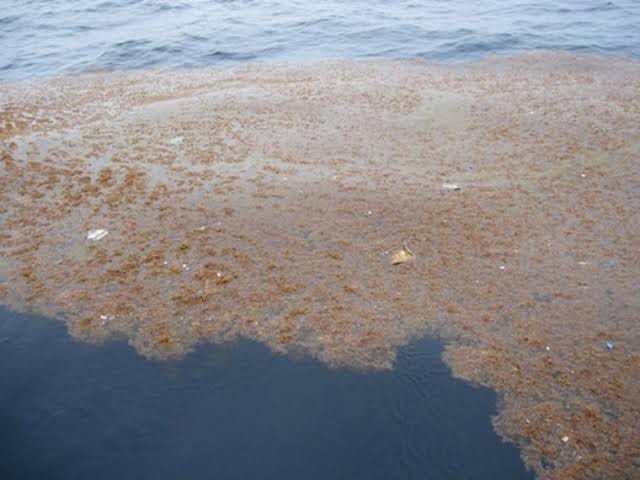5.25 trillion pieces of plastic lodge in the ocean garbage. Not just the North Pacific Garbage Patch, all ocean garbage affected
North Atlantic Garbage Patch records 930 billion pieces of plastic. Industrial fishing the culprit. Perhaps we should stop eating fish
The great North Pacific Garbage Patch, Credit, Forbes
Recently, a study released its findings about the North Pacific Garbage Patch. Seventy-five to eighty-six percent of plastic contained in the patch comes as a result of industrial fishing. Ninety percent of this trash, according to another study, comes from just six countries. Even though in one mission to clean up the trash floating in the place environmentalists pulled forty tonnes of abandoned nets, but this is just part of the story.
The Atlantic garbage patch, Credit, NBC News
Industrial fishing debris also characterizes the North Atlantic Garbage Patch, estimated to be hundreds of kilometers across in size, and having a density of more than 200,000 pieces of debris per square kilometer. Located 22°N to 38°N, the concentration of plastics in the patch remains constant, through the four-fold rise in plastic production in 22 years. The debris drifts south during the El-Nino Southern Oscillation, shifting up to 1,600 kilometers north and south.
Industrial fishing, too, plays a role in the Indian Ocean, where up to 15 million tonnes of plastic find its way into the water, contaminating it with a million pieces of plastic. Discovered in 2010, experts put its concentration of particle debris at about 10,000 particles per square kilometer. It covers at least five million square kilometers, extending to the east coast of Africa to the west coast of Australia, with its northern part circulating from the Horn of Africa to the Indian Archipelago.
In other words, industrial fishing plays a role in the plastics floating in all of the world’s oceans, not just the ones forming the North Pacific Garbage Patch. Through the big role played by the industrial fishing, 5.25 trillion pieces of plastic float in our oceans, enough to circulate the equator 425 times, go to the moon twice and back, with the total amount of plastic heavier than the weight of 38,000 elephants. The debris comes from about 640,000 tonnes of nets, lines, and other fishing materials, all having the same weight as 55,000 double-decker buses.
Rise in plastic production, Credit, Plastic Soup Foundation
The growing worldwide plastic production results in a rapid buildup of plastic waste in the industrial fishing sector, with the manufacture of plastic increasing from two million metric tonnes in 1950 to an annual estimated 380 million metric tonnes in 2015, a compound annual growth rate of 8.4 percent. In another account, the global annual plastic production exceeded 348 million tones in 2017, if synthetic polymers become included.
Rise in number of fishing vessels, ResearchGate
Along with the increase in plastic production, the number of fishing vessels for the industrial sector rose, with an estimated 4.6 million vessels now plying the oceans, dumping fishing gear across the world’s ocean basins. Consequently, between 500,000 to one million tonnes of fishing gear get thrown into the oceans every year, with the product accounting for roughly 10% of debris in the various garbage patches. Forty-six percent of the Great Pacific Garbage Patch contains discarded nets, lines, ropes, according to a study by Canada’s Ghost Gear Fund.
Therefore, due to the rising plastic production and consumption, the industrial fishing sector pollutes the oceans with plastic materials. So now, the North Pacific Garbage Patch contains about two trillion pieces of plastic, at the weight of 192.8 million pounds, with the South Pacific having 491 billion pieces of plastic, at the weight of 42 million pounds. Not to be outdone, the North Atlantic Garbage Patch records 930 billion pieces of plastic, at the weight of 112.9 million pounds, while the Mediterranean Sea harbors 247 billion pieces of plastic, at the weight of 46.3 million pounds.
Dead pregnant whale, Credit, WBUR
Obviously, the unsustainable situation causes grievous consequences. In one study, plastic debris found their way into as much as 386 marine fish species, with 52 percent of the world’s turtles known to have consumed plastic waste. Research shows that plastic contaminates 67 percent of sharks, while studies published from 2010 to 2013 found that an average of 15 percent of sampled fish contained plastic, a number rising to 33 percent in studies published from 2017 to 2019.
Other consequences arise apart from the contamination. Yearly, fishing nets and lines entangle over 300,000 whales, dolphins, and porpoises, the creatures forced to die through starvation, suffocation, or exhaustion. Sea turtles suffer a similar fate, with 300 of them found dead as a result of entanglement in fishing gears off the coast of Oaxaca, with a fishing gear jammed into a pregnant whale’s baleen off the coast of Orkney.
About 18,000,000 tonnes of plastic in South Asia wash into the oceans, dissolving to methane and ethylene through an exposure to sunlight, thereby impacting on climate change. With the amount of plastics in the world’s oceans reaching 250 million tonnes in less than ten years, this could dramatically increase the production of methane and ethylene, worsening the situation. The ocean traps 30 to 50 percent of carbon dioxide through creatures such as planktons, but the creature’s ingestion of plastics inhibits it from effectively carrying out this function, thereby affecting climate change by hampering the removal of the product from the atmosphere.
In sum, industrial fishing through plastic pollution impacts negatively on climate change, and when seen in the context of the fact that 70 percent of all plastics may have sank into the oceans, this shows how grievous the problem is. Since the issue of marine animals getting entangled by fishing gear complicates the situation, it’s understandable why some want to drive reforms to mitigate the rate of industrial fishing’s plastic pollution, before the fishes in our oceans become contaminated.
Perhaps, as experts such as George Monbiot have said, we should stop eating fish. If that happens, the growth of industrial fishing becomes slowed down, and the killing of 650,000 whales, sharks, seals, dolphins, and turtles through the sector comes to an end. The loss of fishing gear becomes less of a problem, saving the ocean of the more than 100 million pounds of plastic pollution entering it. The move could bring 70 percent of trash entering the oceans to a halt, allowing about 5,000 known species of phytoplankton to survive and engage in the sequestration of carbon dioxide. Yes, that should be the solution. A stop put to the consumption of fish.
WHAT TO EAT
Crunchy garlic tofu, Credit, Korean vegan









